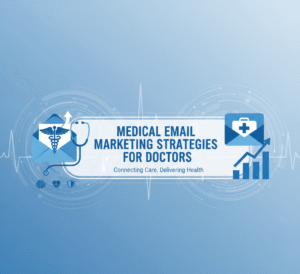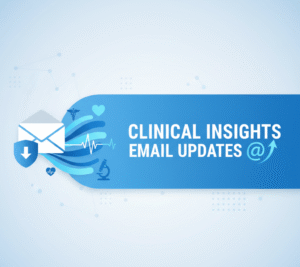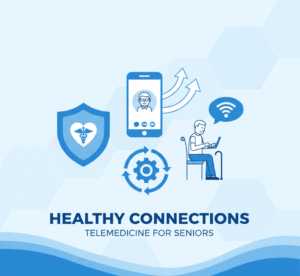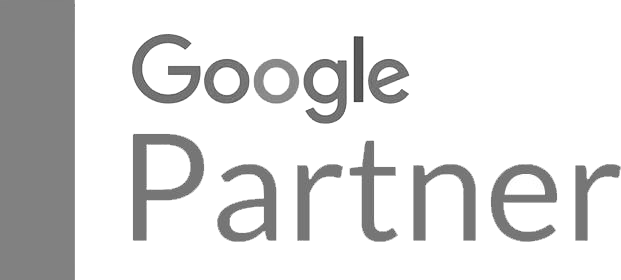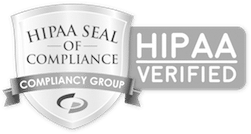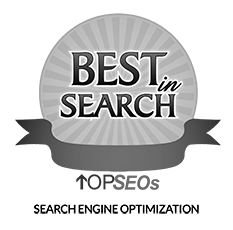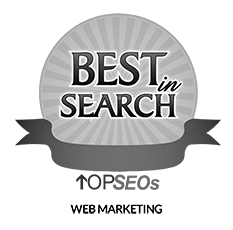“Master Google Business Profile optimization, create hyper-local service pages, and build community authority to dominate local search with eye clinic SEO.”
Are you an optometrist or ophthalmologist aiming to fill your appointment book with local patients? Do you want your eye care center to be the first name people see when they search for “eye doctor near me”? Then you’re in the right place. This guide will walk you through a robust, three-step SEO strategy designed to make your practice a local search powerhouse. Forget complicated jargon; we’ll break down exactly what you need to do to attract a steady stream of new patients right in your neighborhood.
We know you’re committed to delivering exceptional eye care. However, even the best services need to be found. In today’s digital world, that means mastering local SEO. This isn’t just about showing up; it’s about dominating. It’s about ensuring that when someone in your community needs an eye exam, glaucoma testing, or a LASIK consultation, your practice is the obvious choice.
This isn’t just theory. This is a practical, actionable blueprint. We’ll cover everything from optimizing your Google Business Profile to fine-tuning your website and building your online reputation. By the end, you’ll understand how to turn online searches into real-world appointments. Let’s dive in and transform your digital presence.
Section 1: Mastering Your Google Business Profile – Your Digital Storefront
Think of your Google Business Profile (GBP) as your most important digital storefront. It’s what people see first on Google Maps and in local search results. Optimizing it is crucial for attracting patients searching for “eye clinic SEO” or “optometrist local SEO.” An incomplete or poorly managed profile is a missed opportunity. A well-optimized one, however, is a patient magnet.
1. Claim and Verify Your Profile Immediately:
First things first: claim your Google Business Profile. Many businesses overlook this. If you haven’t done it, you’re giving competitors an edge. Go to Google Business Profile and search for your practice. If it’s there, claim it. If not, create a new one. Google will then verify your ownership, often by mailing a postcard with a verification code to your physical address. This step is non-negotiable. Without verification, you can’t fully manage your profile.
Once verified, you gain control. This control allows you to add accurate information, respond to reviews, and post updates. It’s the foundation of your local SEO efforts. Don’t delay this critical step.
2. Optimize for “Eye Doctor Near Me” Searches:
This is where the magic happens for “eye doctor near me” searches. When people use these phrases, they expect instant, relevant local results. Your GBP needs to provide that.
- Accurate Business Name: Use your exact business name. Don’t stuff keywords here. Google wants authenticity.
- Precise Address and Phone Number: Consistency is key. Your address and phone number must match exactly what is listed on your website and other online directories. Any discrepancies can confuse Google and hurt your rankings.
- Primary Business Category: Select the most accurate primary category. For most, this will be “Optometrist” or “Ophthalmologist.” Be specific. This tells Google exactly what you do.
- Additional Categories: Don’t stop at one. Add all relevant secondary categories. Do you offer “LASIK eye surgery center”? Are you a “Contact lens supplier”? List them. The more specific categories you add, the more search queries your practice can appear for. This is crucial for “marketing for ophthalmologists.”
- Service Area: Clearly define your service area. Do you serve a specific city, county, or a radius around your practice? Be clear. This helps Google connect you with potential patients within that geographic scope.
Every piece of information you add tells Google more about your practice. More importantly, it tells Google how to match your practice with what local patients are searching for. This is a direct “local search for eye care” targeting.
3. Detail Your Services (Beyond the Basics):
Many eye care centers list “eye exams.” That’s a start, but it’s not enough. You need to list every specific service you offer. Think about what patients are searching for.
- Specific Service Listings: Don’t just say “eye care.” Break it down. List “comprehensive eye exams,” “pediatric eye care,” “contact lens fittings,” “dry eye treatment,” “glaucoma testing,” “cataract evaluations,” “LASIK consultations,” and “diabetic eye exams.” Each specific service is a keyword opportunity.
- Product Listings: Do you sell designer frames? Specialty contact lenses? List them. Add high-quality photos and descriptions. This makes your profile richer and more informative.
- “From the Business” Description: Use this section to write a compelling, keyword-rich overview of your practice. Naturally weave in terms like “optometrist in [City],” “ophthalmologist in [City],” “LASIK in [City],” and “eye exam in [City].” Highlight your unique selling propositions. Do you have advanced technology? A highly experienced team? Emphasize it here.
The more detailed and accurate your service listings, the more comprehensive your profile becomes. This helps you appear for precise, high-intent searches. Someone looking for “glaucoma testing near me” will find your practice if you’ve clearly listed that service.
4. High-Quality Photos and Videos:
Visuals make your profile stand out. People are visual creatures. They want to see your office, your team, and your equipment.
- Interior Photos: Show your waiting room, examination rooms, and optical shop. Make sure they are clean, inviting, and professional.
- Exterior Photos: Include a clear photo of your building from the outside. This helps patients recognize your practice upon arrival.
- Team Photos: Introduce Your Doctors and Staff. Patients connect with faces. A friendly team photo builds trust.
- Equipment Photos: If you have advanced diagnostic or treatment equipment, showcase it. This speaks to your expertise and modern approach.
- Videos: Short videos of your practice tour or a doctor explaining a procedure can be highly engaging.
- Logo and Cover Photo: Use high-resolution images for your logo and cover photo. These are the first visual impressions.
Regularly add new photos. Show off new equipment, team members, or office renovations. Fresh content keeps your profile active and engaging. This enhances the “attract new optometry patients” efforts.
5. Manage and Respond to Patient Reviews:
Reviews are gold. They build trust, provide social proof, and directly impact your local search rankings. Google values businesses with a strong review profile.
- Encourage Reviews: Actively solicit reviews from satisfied patients to enhance your online reputation and credibility. You can complete this task in person, via email follow-up, or by signing in at your office. Make it easy for them. Provide a direct link to your Google Business Profile review section.
- Respond to ALL Reviews: This is critical. Respond to positive reviews with gratitude. Thank the patient for their kind words. Respond to negative reviews in a professional and empathetic manner. Address concerns directly and offer solutions. Don’t get into arguments. Show that you listen and care. A well-handled negative review can actually improve your image.
- Monitor Reviews Regularly: Stay current with new reviews. Set up alerts to notify you when new ones arrive. Timely responses show engagement.
- Address Common Themes: Look for patterns in your reviews. Are patients consistently praising a specific staff member? Or are there recurring issues? Use this feedback to improve your services.
A robust collection of positive reviews, coupled with thoughtful responses, sends strong signals to Google that your practice is reputable and patient-focused. This directly influences “Google Maps for eye doctors” rankings.
6. Utilize Google Posts:
Google Posts are like mini-blog posts or social media updates directly on your Google Business Profile. They appear in your knowledge panel and can significantly boost visibility.
- Promote Services: Announce new services, such as an “Advanced Dry Eye Clinic” or “New Contact Lens Technology.”
- Share Offers: Promote special offers, like “20% off designer frames this month.”
- Event Announcements: If you host an open house or a community health fair, be sure to post about it.
- Health Tips: Share valuable information, such as “tips for reducing digital eye strain” or “understanding glaucoma symptoms.”
- Team Updates: Introduce New Doctors or Staff Members.
Post regularly. Google likes active profiles. This demonstrates your engagement with your community and your commitment to providing fresh content. Each post can include a call to action, driving traffic to your website or encouraging direct calls.
7. Add Your Business Hours and Special Hours:
Sounds simple, but it’s crucial. Clearly list your regular business hours. If you have holiday hours or special hours for events, update them. Nothing frustrates a potential patient more than showing up to a closed clinic. Accurate hours enhance the user experience and indicate to Google that your information is reliable. This also helps with “increasing patient volume” by ensuring no one is turned away due to incorrect information.
Section 2: On-Page Optimization – Making Your Website a Local Authority
Your website is your digital hub. It’s where potential patients go for detailed information about your services, doctors, and philosophy. A well-optimized website doesn’t just look good; it’s structured to rank high in search results. This means targeting both general terms, such as “eye clinic SEO,” and highly specific, condition-focused keywords.
1. Keyword Research – Knowing What Your Patients Search For:
Effective on-page SEO starts with understanding your audience. What words do they type into Google when they need an eye doctor? This requires solid keyword research.
- Primary Keyword: Your main focus, like “eye clinic SEO.”
- Local Intent Keywords: These are critical. Think “[service] in [City]” or “[specialty] near me.”
- “Optometrist [Your City]”
- “Ophthalmologist [Your City]”
- “Eye exam [Your City]”
- “LASIK surgeon [Your City]”
- “Cataract surgery [Your City]”
- “Glaucoma treatment [Your City]”
- “Pediatric eye doctor [Your City]”
- Condition-Specific Keywords: Go deeper.
- “Dry eye specialist [Your City]”
- “Diabetic retinopathy treatment [Your City]”
- “Macular degeneration therapy [Your City]”
- “Contact lens fitting [Your City]”
- “Myopia control [Your City]”
- Long-Tail Keywords: These are longer, more specific phrases that often indicate higher intent.
- “Symptoms of cataracts and treatment options [Your City]”
- “Best eye doctor for kids with lazy eye [Your City]”
- “Cost of LASIK eye surgery [Your City]”
Use tools like Google Keyword Planner, SEMrush, or Ahrefs to find these keywords. Look for terms with good search volume and manageable competition. Don’t guess. Data-driven keyword selection is far more effective for “eye exam keywords.”
2. Optimize Your Homepage for Local Searches:
Your homepage is your digital front door. It needs to tell Google and potential patients exactly who you are and where you are.
- Title Tag: This is arguably the most important on-page element. It appears in the browser tab and as the clickable headline in search results.
- Example: “Best Optometrist in [City], [State] | [Your Clinic Name]” or “[Your Clinic Name] | Comprehensive Eye Care & LASIK in [City]”
- Include your primary keyword and your city/state.
- Meta Description: This is the summary below the title tag in search results. While not a direct ranking factor, a compelling meta description encourages clicks.
- Example: “Visit [Your Clinic Name] for expert eye exams, LASIK consultations, and advanced eye care in [City]. Schedule your appointment today!”
- Include keywords naturally and a strong call to action.
- H1 Heading: Your main heading on the page. It should closely reflect your title tag and include your primary local keywords.
- Example: “Comprehensive Eye Care from Leading Optometrists in [City]”
- Body Content: Naturally weave your target keywords throughout your homepage content.
- Mention your city and surrounding neighborhoods multiple times.
- Clearly state your services, doctors, and mission.
- Don’t keyword stuff. Write for humans first, search engines second.
- NAP (Name, Address, Phone Number): Display your NAP prominently on your homepage, ideally in the header or footer. This reinforces your local presence for “local search for eye care.”
- Schema Markup (Local Business Schema): This is a technical yet powerful tool. Schema markup provides structured data to search engines, enabling them to understand your business better. Implement a local business schema to inform Google about your business’s name, address, phone number, hours of operation, services, and reviews. This helps you stand out in local search results and appear in rich snippets.
3. Create Service-Specific Pages:
Don’t list all your services on a single page. Create dedicated pages for each major service. This is critical for targeting condition-specific keywords and for “LASIK marketing SEO.”
- Dedicated LASIK Page:
- Title Tag: “LASIK Eye Surgery in [City] | [Your Clinic Name]”
- H1: “Expert LASIK Consultations and Surgery in [City]”
- Content: Detail the LASIK procedure, benefits, candidacy requirements, technology used, and testimonials. Naturally include terms like “LASIK surgeon [City],” “laser eye surgery [City],” “LASIK cost [City].”
- Cataract Surgery Page:
- Title Tag: “Cataract Surgery in [City] | Advanced Treatment”
- H1: “Leading Cataract Surgeons in [City] for Clearer Vision”
- Content: Explain cataracts, symptoms, diagnosis, surgical options, and recovery. Incorporate keywords like “cataract specialist [City],” “cataract removal [City].”
- Glaucoma Testing Page:
- Title Tag: “Glaucoma Testing & Treatment [City] | [Your Clinic Name]”
- H1: “Comprehensive Glaucoma Management in [City]”
- Content: Describe glaucoma, the importance of early detection, testing methods, and treatment options. Use terms like “glaucoma doctor [City],” “eye pressure test [City].”
Each service page should be comprehensive, informative, and include local keywords. This demonstrates to Google that you are an authority on these specific topics in your area. Add a call to action on each page, encouraging appointments for that particular service.
4. Create Location-Specific Pages (If You Have Multiple Locations):
If your practice has multiple physical locations, each one needs its own dedicated, optimized page. Do not create a single “locations” page with all addresses.
- Unique Content: Each location page needs unique content. Don’t just copy and paste.
- Describe the specific neighborhood/community.
- Highlight unique features of that location.
- Introduce the doctors who primarily work at that location.
- Include local testimonials for that specific branch.
- NAP Consistency: Ensure the NAP for each location is clearly displayed and consistent with its respective Google Business Profile.
- Local Keywords: Optimize each page for “[service] in [Specific Neighborhood/City for that location].”
This strategy informs Google that each of your locations is a distinct, relevant entity for local searches, significantly enhancing “ophthalmology SEO services” for multi-location practices.
5. Optimize Images for Speed and SEO:
Images make your site appealing, but large image files can slow it down. Slow websites can harm both rankings and user experience.
- Compress Images: Use image compression tools to reduce file size without sacrificing quality.
- Alt Text: Every image needs “alt text.” This is a short description of the image for visually impaired users and search engines.
- Example: For an image of an optometrist examining a patient’s eye: “Optometrist performing comprehensive eye exam at [Your Clinic Name] in [City].”
- Include relevant keywords where natural.
- Descriptive File Names: Instead of “IMG_001.jpg,” name your files “lasik-surgery-chicago.jpg.”
Optimized images contribute to faster load times and provide additional opportunities for keywords.
6. User Experience (UX) and Mobile-Friendliness:
Google prioritizes websites that offer a good user experience. This means your site needs to be fast, easy to navigate, and mobile-friendly.
- Mobile-First Design: A vast majority of local searches happen on mobile devices. Your website MUST be responsive and look great on smartphones and tablets. Google actively penalizes sites that aren’t mobile-friendly.
- Fast Loading Speed: Patients won’t wait for a slow website. Utilize tools like Google PageSpeed Insights to assess your site’s speed and pinpoint areas for improvement. Optimize images, leverage browser caching, and utilize a fast web hosting service to enhance your website’s performance.
- Straightforward Navigation: Patients should be able to find what they’re looking for (services, doctors, contact info, online scheduling) quickly and intuitively. Use clear menus and call-to-action buttons.
- Secure Website (HTTPS): Ensure your website uses HTTPS. This shows a secure connection and is a minor ranking factor. If your site is still HTTP, switch to HTTPS immediately.
A positive user experience keeps patients on your site longer, reduces bounce rates, and signals to Google that your site is valuable and trustworthy.
7. Create Valuable Blog Content:
A blog is an excellent way to target more “eye exam keywords” and “online marketing for eye clinics” related searches. It establishes your expertise and provides fresh content.
- Educational Topics: Write articles addressing common patient questions or concerns.
- “What to Expect During a Comprehensive Eye Exam”
- “Understanding the Differences Between Optometrists and Ophthalmologists”
- “Preventing Digital Eye Strain in Children”
- “The Benefits of Daily Disposable Contact Lenses”
- “When Should You Get Checked for Glaucoma?”
- Local News/Events: Tie in regional events with eye health.
- “Protecting Your Eyes During [Local Sporting Event]”
- “Seasonal Allergy Eye Relief Tips for [Your City] Residents”
- Clinic News: Share updates about new technology, services, or team members.
- Keyword Integration: Naturally weave long-tail and question-based keywords into your blog posts.
- Internal Linking: Link from your blog posts to relevant service pages on your website. This improves site navigation and passes authority.
Regularly updated, high-quality blog content positions your practice as a trusted resource, driving more organic traffic and patient inquiries.
Section 3: Building Local Authority – Earning Trust and Visibility
Even with a perfect Google Business Profile and an optimized website, you need to prove your authority to Google. This means building trust signals that show you are a legitimate, respected, and active part of the local community. This involves consistent citations and quality backlinks.
1. Consistent Business Directory Citations:
A citation is any online mention of your Name, Address, and Phone number (NAP). Consistency across these citations is vital for local SEO. Inconsistent NAP information can confuse search engines and hurt your rankings.
- The Big Four: Start with the most important directories:
- Yelp
- Yellow Pages
- Healthgrades
- Vitals
- RateMDs
- WebMD
- Industry-Specific Directories: Search for directories that are specifically tailored to eye care professionals.
- American Academy of Ophthalmology (AAO)
- American Optometric Association (AOA)
- Local Chamber of Commerce
- [Your State]’s Optometric or Ophthalmological Association
- Local Directories: Find general local business directories for your city or region.
- Review and Correct Existing Citations: Don’t just create new ones; review and correct existing ones to ensure accuracy and consistency. Audit your existing citations. Search for your practice across various platforms. Are there old addresses or phone numbers? Correct them immediately. Use a tool like Moz Local or BrightLocal for this, or complete the task manually.
The goal is to have a consistent NAP across as many reputable online directories as possible. This reinforces your local presence for “marketing for ophthalmologists” and general eye clinic searches.
2. Acquiring Backlinks from Local Health Organizations and Businesses:
Backlinks are links from other websites to yours. They are a powerful signal of authority to Google. Think of them as votes of confidence. Not all backlinks are equal; links from relevant, high-authority local websites are the most valuable for “increasing patient volume.”
- Local Health Organizations:
- Local Hospitals: If you have referral relationships or privileges at local hospitals, see if you can get a link from their physician directory or resources page.
- Community Health Centers: Collaborate with local health centers to enhance patient care and support.
- Other Healthcare Specialists: Build relationships with local primary care physicians, dentists, chiropractors, or physical therapists. They might link to your “trusted eye care partner” page.
- Local Medical Associations: Get listed on your city or county medical society’s website.
- Local Businesses and Community Groups:
- Local Schools: Offer to provide free eye health screenings or educational talks for students. In return, they might link to your practice as a community partner.
- Local Sports Teams/Leagues: Sponsor a local youth sports team. Often, their website will list sponsors with links.
- Chamber of Commerce: Actively participate in your local Chamber of Commerce. This can lead to directory listings and networking opportunities for links.
- Local News Outlets/Blogs: If you have newsworthy events (e.g., new technology, community service), reach out to local news sites or community bloggers.
- Local Charities/Non-Profits: Support local charitable causes. Many non-profits acknowledge their donors and partners with links.
- Guest Blogging: Offer to write an informative guest post for a relevant local blog or website (e.g., a parenting blog, a senior living resource). In your author bio, you can link back to your site.
- Scholarship Programs: Establish a local scholarship for students interested in pursuing a career in the healthcare field. Schools will often link to scholarship providers.
Building backlinks takes time and effort, but it’s one of the most effective ways to build domain authority and significantly improve your rankings for “ophthalmology SEO services” and beyond. Focus on quality over quantity. A few links from highly relevant local sources are far more valuable than many low-quality links.
3. Local Content Strategy – Hyper-Targeting Your Community:
Beyond your core service pages and blog, create content that specifically targets your local community. This enhances “local search for eye care.”
- “Things to Do in [City]” & Eye Health: Write about local attractions and how eye health relates to them.
- “Best Places to Enjoy Fall Foliage in [City] Safely (with good vision)”
- “Protecting Your Eyes While Cycling the [Local Bike Path]”
- Community Events: Sponsor or participate in local events and write about your involvement.
- Local Patient Stories: Share success stories (with patient permission) from people in your community.
- Neighborhood Pages: If your city has distinct neighborhoods, create specific content targeting those areas.
- “Optometrist serving [Neighborhood 1] and [Neighborhood 2]”
- “Eye Clinic for the [Local Landmark] Area”
This type of hyper-local content makes your website highly relevant to residents searching for eye care in their immediate area.
4. Social Media Presence and Engagement:
While not a direct ranking factor, social media indirectly supports local SEO. It drives traffic, increases brand awareness, and can lead to local shares and mentions.
- Local Focus: Share local news, events, and community-focused content.
- Engage with Local Users: Respond to comments and messages.
- Promote Your Google Business Profile: Encourage reviews and share your Google Posts on your social channels.
- Run Local Ads: Consider targeted social media ads to reach specific demographics in your service area.
A strong, active social media presence complements your other SEO efforts by building a community around your brand, enhancing its visibility and credibility.
5. Monitor Your Performance Regularly:
SEO is not a “set it and forget it” strategy. You need to monitor your progress and make adjustments continually.
- Google Analytics: Track website traffic, bounce rate, time on page, and conversion rates (e.g., appointment requests).
- Google Search Console: Monitor your search rankings, indexed pages, and identify any technical issues that may affect your online presence. Pay attention to which keywords drive traffic.
- Google Business Profile Insights: See how many people view your profile, how they find you (direct vs. discovery search), and how many call or request directions.
- Local Rank Tracking Tools: Use specialized tools to track your local keyword rankings in your target geographic areas.
By regularly reviewing your data, you can understand what’s working, what’s not, and where to focus your future efforts. This iterative approach is crucial for sustained success in “attract new optometry patients” efforts.
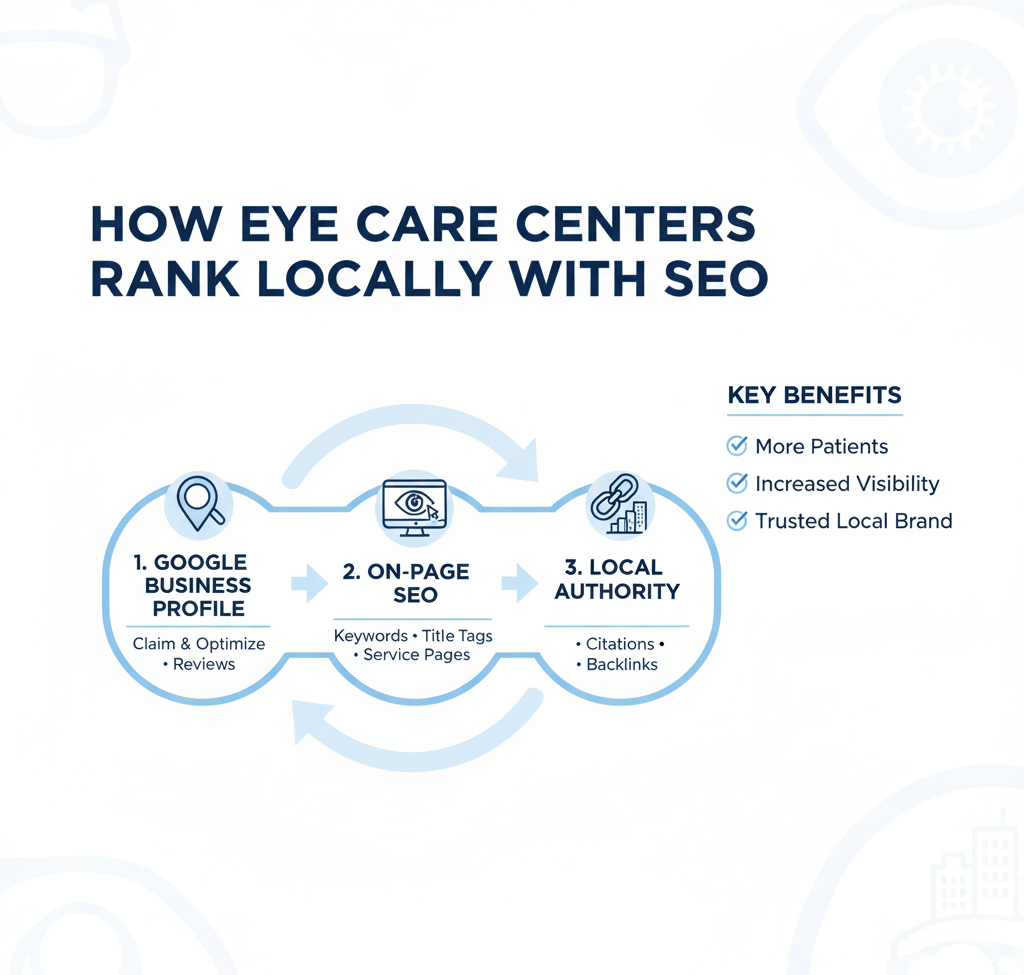
The InvigoMedia Advantage: Your Partner in Local SEO Dominance
You’re an eye care professional, not an SEO expert. You dedicate your time to providing exceptional patient care, diagnosing conditions, and performing intricate procedures. Trying to master the ever-changing landscape of local SEO on your own can be overwhelming, time-consuming, and frankly, detract from your core mission. This is where InvigoMedia steps in.
As a premier healthcare marketing agency, InvigoMedia specializes in transforming how eye care centers connect with their local communities online. We understand the unique challenges and opportunities within the medical field, particularly for optometrists and ophthalmologists. Our expertise isn’t just theoretical; it’s built on a foundation of proven strategies designed to deliver tangible results.
How InvigoMedia Drives Local Patient Flow:
- Comprehensive Google Business Profile Management: We take the guesswork out of your GBP. From initial claim and verification to meticulous optimization, we ensure your profile is a patient magnet. This includes:
- Keyword-Rich Optimization: We strategically integrate “optometrist local SEO” and specific service keywords (e.g., “glaucoma testing [City]”) into every section of your profile.
- Review Management: We implement robust strategies to encourage positive reviews and craft professional, timely responses to all feedback, enhancing your online reputation.
- Consistent Updates: We regularly post compelling updates about your services, offers, and news, keeping your profile fresh and engaging.
- High-Quality Visuals: We help curate and optimize stunning photos and videos that showcase your practice in the best light.
- Targeted On-Page SEO for Eye Care: Your website is a powerful asset. We ensure it’s not just informative but also obvious to local searches. Our services include:
- In-Depth Keyword Research: We identify the precise terms your potential patients use, from “eye exam keywords” to specific condition searches, such as “cataract surgeon in [City].”
- Homepage and Service Page Optimization: We meticulously optimize title tags, meta descriptions, H1 Headers, and body content to maximize local relevance and search engine visibility.
- Service-Specific Content Creation: We develop dedicated pages for each of your services (e.g., LASIK, dry eye, pediatric eye care), ensuring each is optimized for its unique keywords and tailored to its specific needs. This is critical for “LASIK marketing SEO” success.
- Technical SEO Expertise: We handle the technical aspects, ensuring your site is fast, mobile-friendly, secure (HTTPS), and utilizes local business schema markup for superior performance.
- Strategic Local Authority Building: We understand that trust and relevance are earned through effective communication. Our team focuses on building your practice’s online authority:
- Citation Management: We create and meticulously maintain consistent NAP listings across all vital business directories and industry-specific platforms, a cornerstone of “ophthalmology SEO services.”
- Local Backlink Acquisition: We employ ethical, results-driven strategies to acquire high-quality backlinks from local health organizations, community partners, and relevant businesses, significantly boosting your domain authority.
- Local Content Development: We help you create hyper-local content that resonates with your community, further cementing your position as the go-to eye care center in your area.
The InvigoMedia Difference:
- Healthcare Specialization: We don’t just do general SEO; we specialize in Medical SEO. This means we understand the nuances of patient acquisition, medical terminology, and ethical marketing within the healthcare sector.
- Data-Driven Strategies: Our approach is rooted in analytics. We continuously monitor performance, adapt strategies, and provide transparent reporting so you always know the impact of your investment. We focus on “increase patient volume.”
- Long-Term Partnership: We aim to be more than just a vendor; we strive to be a true partner in your practice’s growth. We’re dedicated to helping you achieve sustainable local search dominance.
Stop letting potential patients find your competitors. Let InvigoMedia manage your local SEO so you can focus on what you do best: providing exceptional eye care. With our specialized “eye clinic SEO” strategies, your practice will not only rank locally but thrive, attracting a consistent flow of new patients ready to experience your expert care.
Contact InvigoMedia today for a consultation. Let’s develop a robust local SEO strategy that positions your eye care center precisely where it needs to be: at the top of local search results.
FAQs About Eye Clinic Local SEO
Q1: How long does it take to see results from local SEO for my eye clinic?
A1: Local SEO is a long-term strategy. You may notice some initial improvements within 2-3 months, particularly with Google Business Profile optimization. However, significant, consistent results typically take 6-12 months or even longer. It depends on competition and your starting point. Consistency is key.
Q2: Is local SEO still vital if I also do traditional advertising?
A2: Yes, absolutely. Local SEO complements traditional advertising. Many patients who hear about your practice through an ad will still “Google” you before calling or visiting. A strong local online presence builds trust and reinforces your brand. It captures the modern patient’s journey.
Q3: Should I hire an agency or do local SEO myself?
A3: You can do some basic local SEO tasks yourself. However, for dominant rankings and consistent patient flow, hiring a specialized agency like InvigoMedia is highly recommended. They possess the expertise, tools, and time to implement advanced strategies and stay current with Google’s ever-evolving algorithms. Your time is best spent on patient care.
Q4: What’s the most critical factor for “eye doctor near me” searches?
A4: Your Google Business Profile is the most critical element. Optimizing it completely, accurately, and consistently, along with actively managing reviews, directly impacts your visibility for “near me” searches on Google Maps and local packs.
Q5: How often should I update my Google Business Profile?
A5: You should log in and check your profile regularly, ideally once a week. Post new content (Google Posts) at least once a week. Respond to new reviews promptly. Ensure your hours are always correct. Keeping it active signals relevance to Google.
Q6: What if I get a negative review on Google?
A6: Don’t panic. Respond professionally and empathetically. Thank them for their feedback, apologize for their experience, and offer to resolve the issue offline. A well-handled negative review can demonstrate to potential patients that you prioritize patient satisfaction and care. Never get into an argument.
Q7: How can I increase the number of backlinks for my eye clinic website?
A7: Focus on building relationships within your local community. Partner with local businesses, sponsor events, offer educational talks at schools, and network with other healthcare professionals to expand your reach and enhance your reputation. Reach out to local health organizations for listing opportunities. Quality and local relevance are paramount.
Q8: My website is old. Does that affect my local SEO?
A8: Yes, an old or outdated website can significantly hurt your local SEO. If it’s not mobile-friendly, loads slowly, or lacks a secure HTTPS connection, Google will penalize it. A modern, optimized website is crucial for achieving a high ranking and delivering a seamless user experience.
Q9: What are “eye exam keywords” and why are they important?
A9: “Eye exam keywords” are the specific phrases people type into Google when looking for an eye examination. Examples include “comprehensive eye exam [City],” “pediatric eye exam near me,” and “contact lens exam [City].” Targeting these ensures your clinic appears in direct response to patient intent, driving relevant traffic.
Q10: Can local SEO help increase patient volume for specific services like LASIK?
A10: Absolutely. By creating dedicated, optimized pages for services like LASIK and targeting specific “LASIK marketing SEO” keywords (e.g., “LASIK surgeon [City],” “laser eye surgery cost [City]”), you can attract highly qualified leads interested in those specific procedures, directly contributing to “increase patient volume.”



